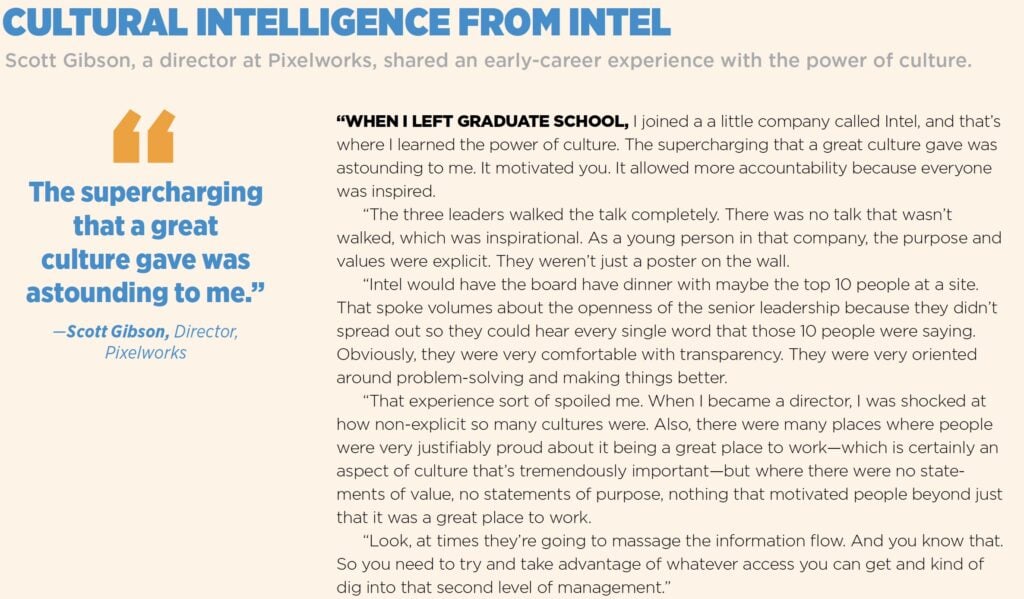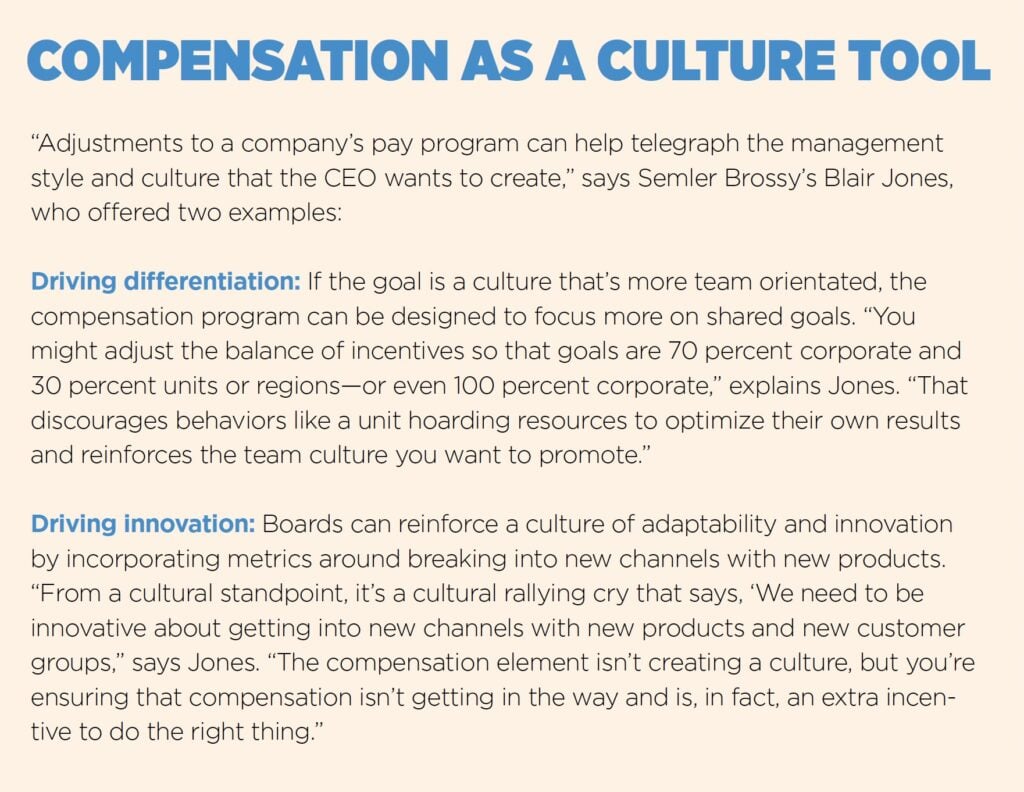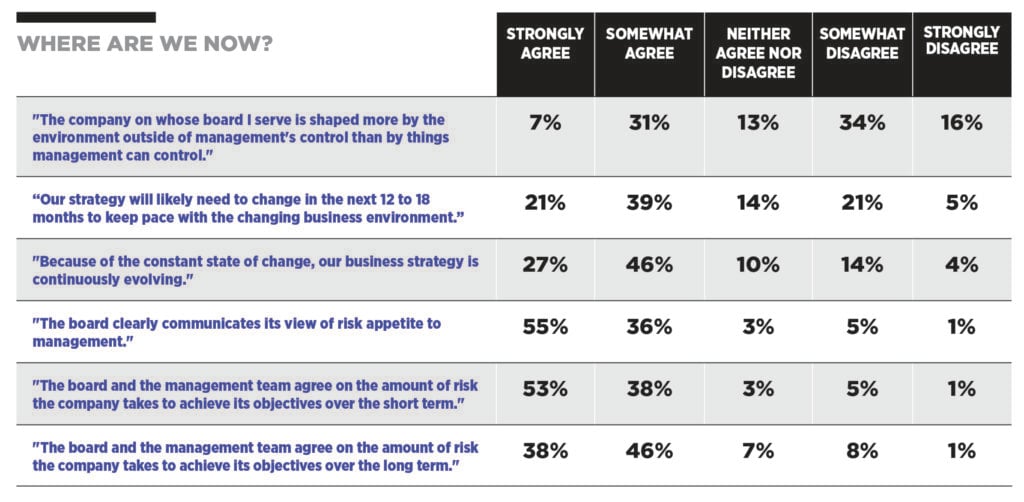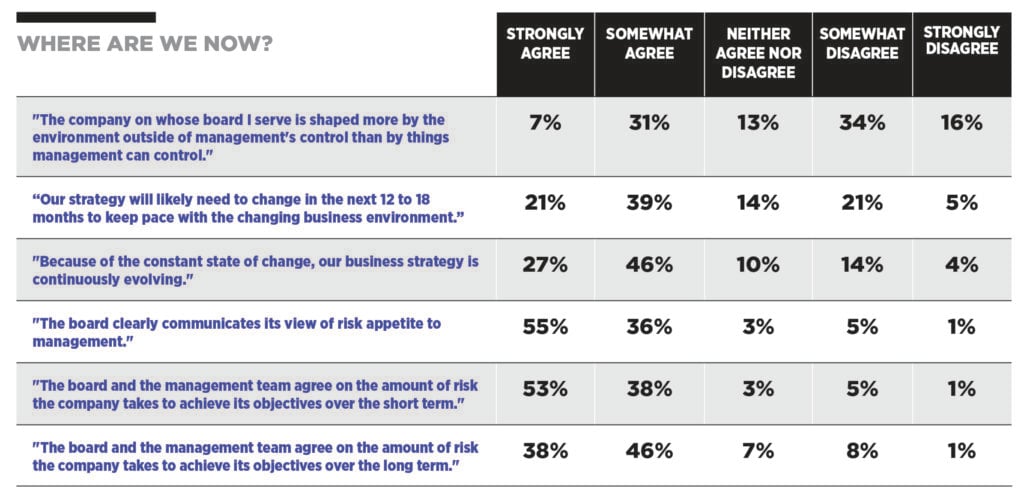Workplace culture is more critical— and perhaps more vulnerable—than ever. Absent a positive and engaging work environment, disruptive forces like political divisiveness, the advent of AI, market gyrations and macroeconomic turmoil all have the potential to seep into a workplace in insidious ways, sowing fear and discord. Over and over, we’ve seen that a strong, adaptable culture can act as a superpower during such times, bringing team members together to combat negativity, forge a path forward and emerge stronger than ever.
Yet, understanding, overseeing and holding management accountable for building and sustaining a strong corporate culture is tricky for boards, which often struggle to get a true understanding of a company’s internal climate, agreed participants in a recent roundtable discussion held in partnership with Semler Brossy. “It’s hard to gauge sentiment,” said Caroline Chan, a director at EnerSys. “Unlike management, we’re not there day in and day out. We meet once a quarter.”
“When you’re a board member it can be very difficult to get your arms around what that culture is and to understand how it’s being translated throughout the organization,”agreed Blair Jones, a managing director at the consulting firm Semler Brossy. “The risk for boards is that you get these inklings, and you act 18 months to two years too late.”
The stakes are high, noted Barbara Lang, a director at Piedmont Office Realty Trust, who recounted serving on the board of a large nonprofit that failed to recognize cultural red flags. “All of a sudden the board started getting a lot of anonymous letters, citing a whole bunch of things,” she explained. “The board absolutely did not do their job because there had been some indicators before, but everybody kind of turned a blind eye until all of a sudden we had this explosion. Now we’re going through a health assessment to try to figure out what actually is happening.”
TRUST AND TRANSPARENCY
To stave off such outcomes, boards need to be proactive and bold in monitoring and addressing cultural health. Leveraging data-gathering methods and seeking out opportunities to engage directly with employees are key, noted several roundtable participants.“We do employee surveys, and we bring in an outside consultant to help the board weed through a lot of data,” said Chan. “Are we always ahead of the game? No, but it’s better than hearing from the head of HR once a quarter. I don’t think that’s sufficient.”
The boards that get the most out of surveys look beyond headline engagement scores, analyzing responses, segmenting feedback across business units and looking closely at compliance-related data as a harbinger of talent concerns as a full board, added Blair. “So you are checking, how many executive behavior complaints do we have?” she explained. “How many sexual harassment and racial issue reports do we have? And how many have been substantive? How have they been dealt with? Because you learn a lot about the company by how they’re working through a lot of those items.”
Several directors underscored the importance of opportunities to speak directly with employees. “Expand it from just the C-Suite,” suggested Evan Templeton, a director at Kolibri Global Energy. “Whether it’s at an event or by diving in with meetings, you need to try to dig into that second level of management and really just probe the people. Do you have enough resources? Do you find that management is providing you what you need in your group to excel? Sometimes that will give you an indication that something is on track or not on track, because if everything is just being filtered through the the CFO and the CEO, at times management is going to massage the information.”
“There’s no substitute for having the board socializing, doing dinners and site visits and being out in the field to really be able to talk with the employees,” agreed Christobel Selecky, a director at Immunity- Bio, where directors engage with employees regularly. “Every year, we go out and visit sites where they let the board members meet with frontline employees without any management in the room, just to talk to them about what it feels like to work there.”

THE CEO’S ROLE
That level of trust between the CEO and the board is foundational for that deeper cultural engagement, noted Derrell Porter M.D., CEO of cTRL Therapeutics. “You need to build a trust-based relationship with the CEO before you can get into the next layers of the organization and spend time with executives,” he said. “Otherwise, you get CEOs who are nervous and want to control a lot of the communication and exposure.”
Establishing that trust often falls to the lead director, who can make sure the board is aligned around supporting and advising the CEO. “The trust starts to build when the CEO sees what board members can add and that they are there to help, not just push back all the time,” said Jones. “That’s something the lead director can help communicate or, if that trust doesn’t exist, bring in an outside facilitator to address.”
Boards tasked with seeing a company through the CEO succession process should be mindful of how a new leader will influence culture, particularly when considering an outside hire. “To really dig down into that new CEO’s capacity to deliver the culture that the company wants is a very tricky position for the board to be in,” said Bill Sandbrook, a director at Knife River. “Because that individual’s experiences are in large part going to dictate how he or she leads that company and the potential for disruption to a good culture. It’s a big risk, especially if you bring in a command- and-control person and it’s a decentralized culture because the new individual will want to put their stamp on it.“
COMPENSATING ON CULTURE
Integrating cultural metrics into performance evaluations is another powerful tool in a board’s culture oversight arsenal. “We need to hold our people accountable for how they’re managing their business and for achieving that level of trust and transparency,” said Gary Collar, a director at Hillenbrand and Hyster-Yale. “How our leaders are leading—not just what results they’re getting, but what feedback we get out of the organization about that leader—becomes part of their annual review process… I can’t overemphasize how much that work on culture can give back to an organization, so getting that built into your metrics for all of your leadership team is important.”
Tying those metrics to incentive pay and promotion opportunities drives the message home. When employees see someone being elevated who delivers results and embodies the company’s cultural values, it reinforces that both the “what” and the “how” matter. Conversely, failing to hold high performers accountable for poor behavior erodes trust and credibility. By ensuring there’s clarity around promotion criteria and that those criteria align with the company’s desired culture, boards can play a central role in overseeing how these decisions are made.
Some organizations even apply a modifier to performance-based pay so that their incentive pay is reduced if an individual meets business objectives but does so in a way that undermines core values or behaviors. “For example, they may get an 80 percent instead of 100 percent,” explained Jones, who added that promotion practices also send a strong signal to employees. “The minute you pass over somebody or don’t hold somebody accountable who achieves results, but doesn’t do it in a good way, the whole organization knows. And a promotion is a much bigger deal than a 3 percent or 4 percent merit increase, so who you promote sends a really important signal about your priorities around culture. Boards can play a really important role in seeing how those promotion decisions are made.”
Ultimately, effective board oversight of culture calls for continual effort on multiple fronts and a deep understanding of culture as a strategic driver of performance, risk management and long-term value. It’s an area where today’s boards can’t afford complacency. “In this moment, when everything is going off kilter, employees are looking for a steadiness from leadership,” said Jones. “People are looking at leaders to say, ‘Are you, leader, leading us in a way that’s going to help us keep up and not get left behind?’ Having clarity around a clear sense of purpose and values and leaders visibly leaning into that becomes more important during times like these.”








